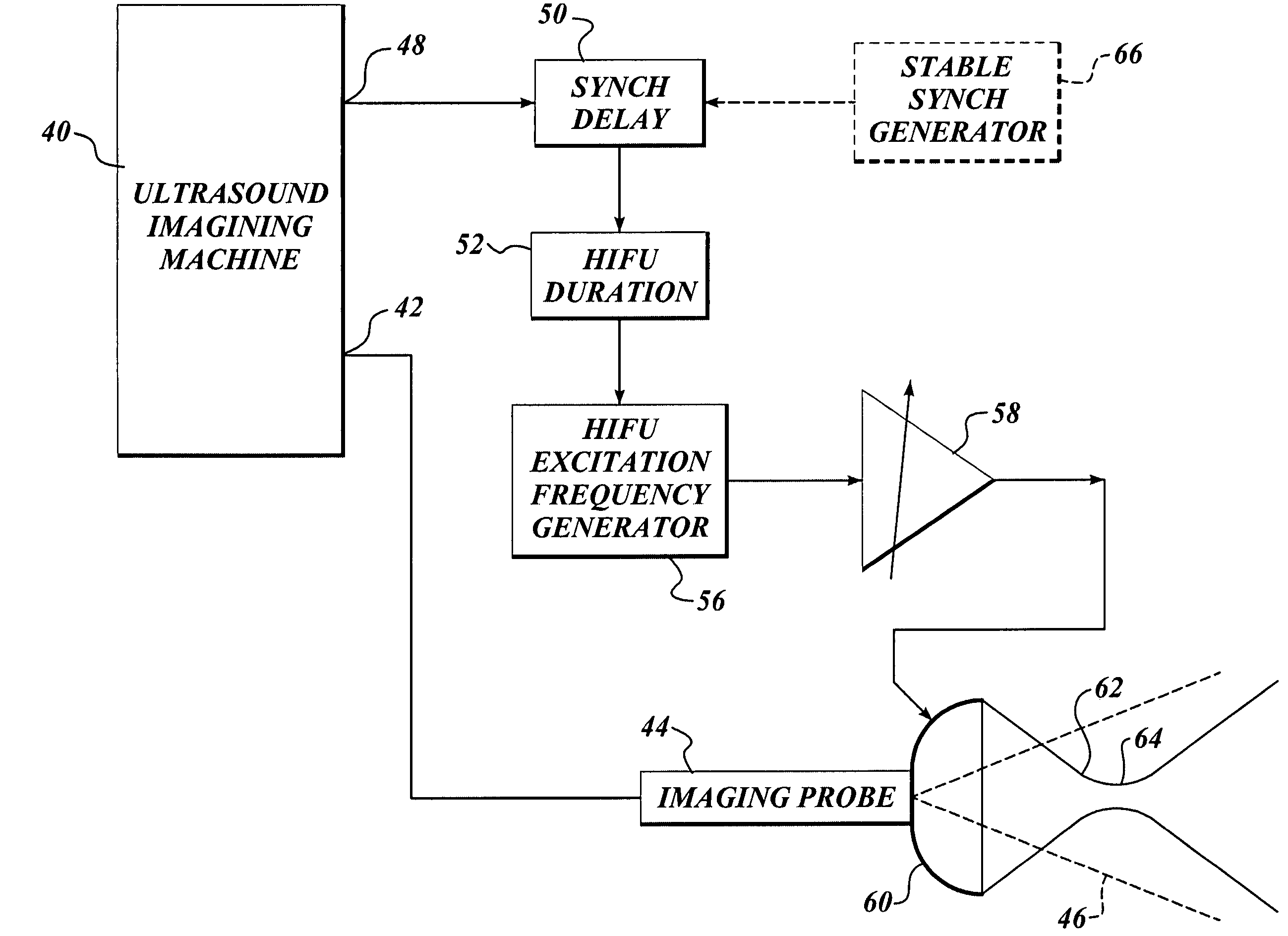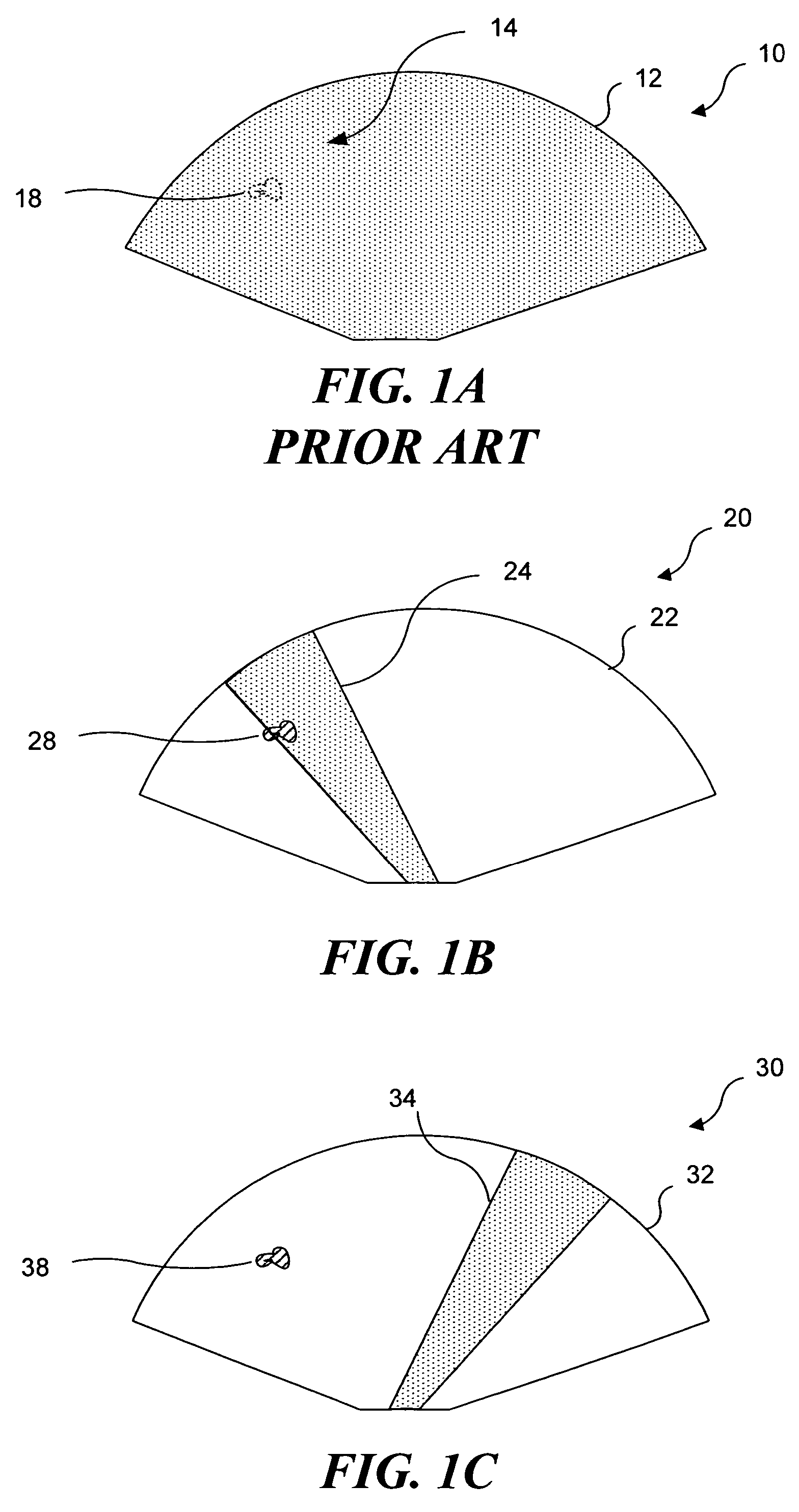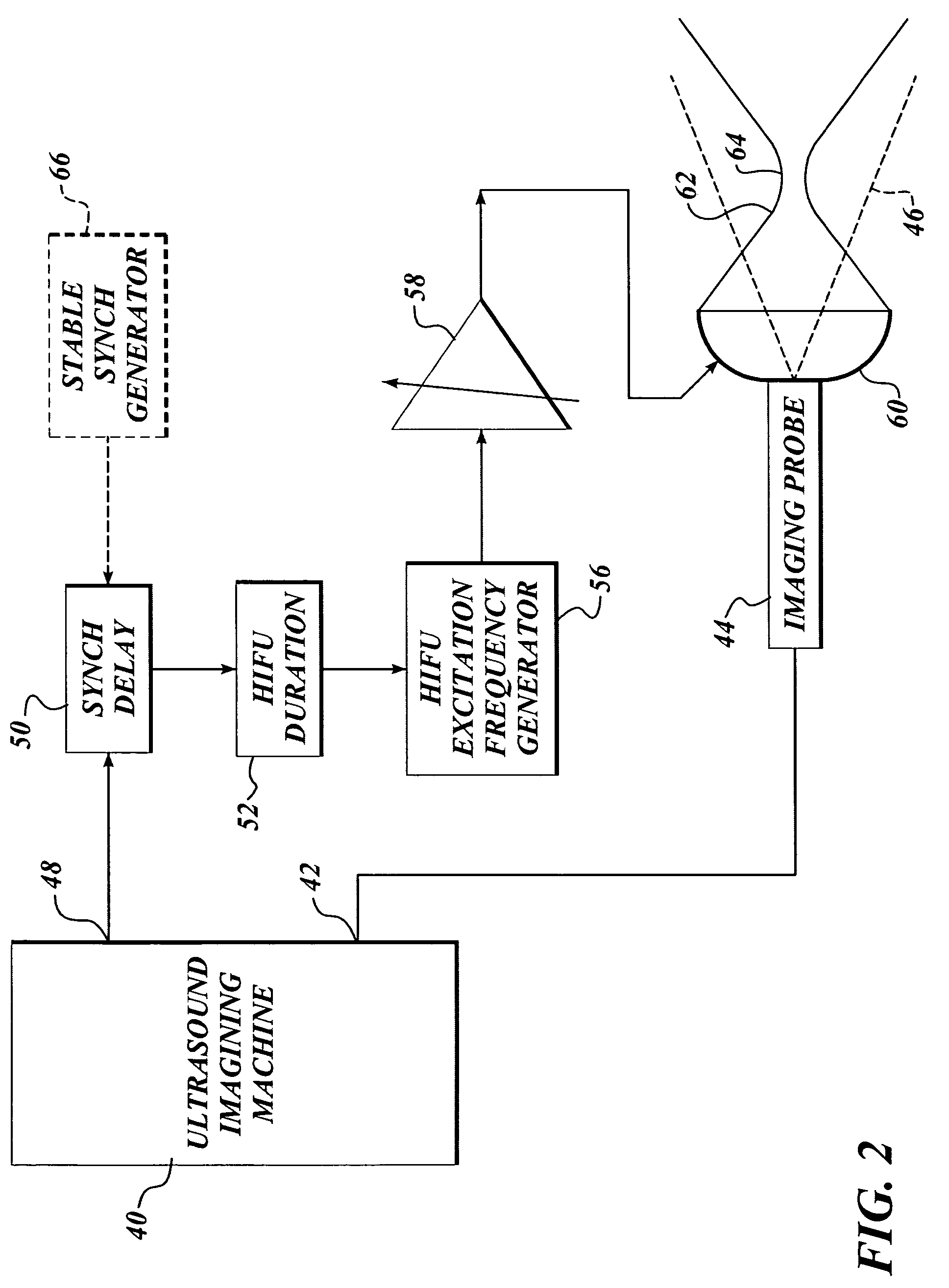Ultrasound guided high intensity focused ultrasound treatment of nerves
a high-intensity, focused ultrasound technology, applied in the direction of catheters, applications, therapy, etc., can solve the problems of tissue and cellular disorganization, disrupt sleep, and compromise the quality of life, so as to reduce the spasticity and reduce the pain
- Summary
- Abstract
- Description
- Claims
- Application Information
AI Technical Summary
Benefits of technology
Problems solved by technology
Method used
Image
Examples
Embodiment Construction
Overview of the Present Invention
[0062]The present invention is directed to a method for using HIFU to treat nerves. Nerves can be targeted to alleviate pain, to provide an anesthetic effect, or to reduce spasticity. HIFU treatment of nerves offers potential to replace Botox (i.e., BTX) injections to achieve a cosmetic effect, as discussed in greater detail below. Depending on the dose of HIFU delivered to the nerve, a relatively temporary blockage or a relatively permanent blockage can be achieved. Furthermore, depending on how much of a nerve is treated, a partial conductive block or a complete conductive block can be achieved. Because of the relatively small size of nerves, and the potential for HIFU beams to damage non-target tissue, it is particularly important to accurately position the focal point of the HIFU transducer on a carefully selected portion of the nervous system before beginning treatment. It is also important to be able to visualize the focal point of the HIFU bea...
PUM
 Login to View More
Login to View More Abstract
Description
Claims
Application Information
 Login to View More
Login to View More - R&D
- Intellectual Property
- Life Sciences
- Materials
- Tech Scout
- Unparalleled Data Quality
- Higher Quality Content
- 60% Fewer Hallucinations
Browse by: Latest US Patents, China's latest patents, Technical Efficacy Thesaurus, Application Domain, Technology Topic, Popular Technical Reports.
© 2025 PatSnap. All rights reserved.Legal|Privacy policy|Modern Slavery Act Transparency Statement|Sitemap|About US| Contact US: help@patsnap.com



